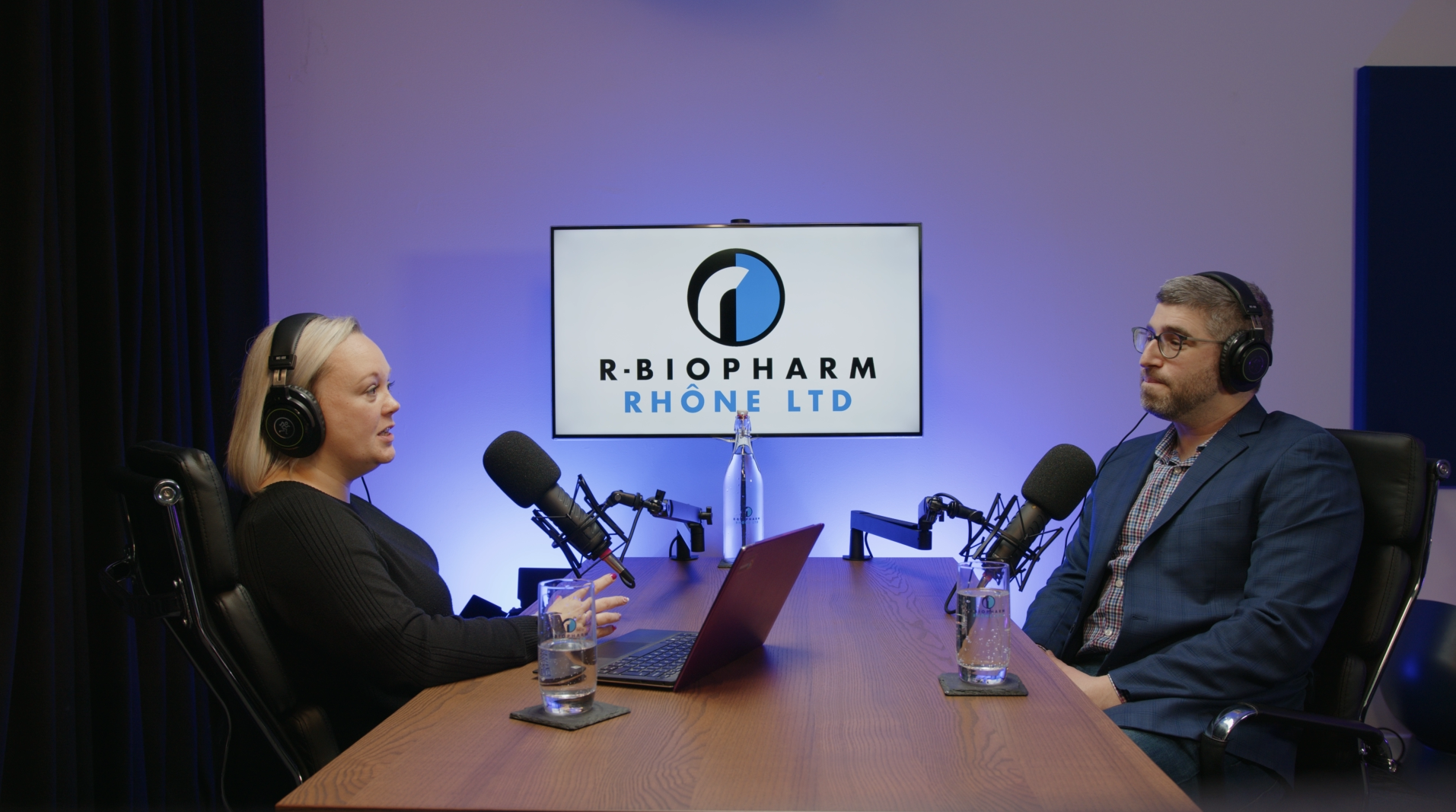What’s the Best type of Mic for Your Podcast?
Let's talk about microphones. If you're going to start a podcast or maybe you've already got a podcast, the most important bit of kit that you need to get is a microphone. The dilemma is what's the best sort of microphone to get? And I think the temptation can be that you jump onto Amazon and you just have a look on Amazon at all the various different types of microphones that are available.
Should I Get a USB Mic for my Podcast?
What’s the deal with USB microphones: are they any good?
They can be okay. And that takes us to the second most important thing to consider when you're recording your podcast.
The first is the microphone, the second is where you record. You ideally need to be in a room that is in some way acoustically treated, because the microphones that you can get for not a lot of money on Amazon, the USB ones, won't do a great job of isolating your voice from their surroundings and maybe you've experienced this. You record and then you listen back and you don't seem to have the vocal presence that you hear other podcasters achieving on their podcasts. That sense that their voice is the only thing. You're not picking up the room. That's the challenge for us. So if we're going to be recording at home, maybe in the spare bedroom, maybe in the kitchen, maybe just in our home office, wherever it may be, and we're going to go for an inexpensive USB type mic that we're just going to plug into our computer and get going.
What About the Room I Record In?
You're going to need to think about treating the room in some way. So that's reducing the number of hard surfaces that you have in your room. And that can be not easy. You're putting rugs down on hard floors. Some people even hang rugs and extra curtains around where they're recording. And the challenge with that is, or the difficulty with that is, you start to lose the aesthetics if you're recording video along with your podcast.
So you need a mic. And you need to be recording in a room that's suitable for audio recording. Those things are challenges. Let's just quickly talk though about microphones. I've got a couple here. This is An electoral voice, RE three 20, and it's a dynamic mic and the one that I'm using here is an electoral voice, RE 20, which is also a dynamic mic.
Should I Buy a Condenser Mic for my Podcast?
Let's talk about the differences in the types of microphones that you can record with. We've already looked at Amazon and you get the fairly inexpensive, um, microphones, um, on Amazon. A lot of these are going to be what are called condenser microphones. So you can possibly see it there. Condenser mic, condenser mic, condenser mic.
And a condenser mic is going to allow you to be further away from the mic without necessarily Your voice dipping in and out, but we're going to run into the same problem as I mentioned earlier You're going to pick up a lot of the room in which you're in. So again, if the room isn't acoustically treated That's going to make for audio that even though you may think well I've got this microphone and it maybe looks the part.
It's probably not going to sound the part Just because it's the wrong type of microphone. So the microphone that I'm using here The electoral voice. Re 20. This one, the electoral voice, re three 20, and the other one that I have on the desk, this is a road pro caster. These type of mics are dynamic mics.
They can be a little bit more expensive, but let me talk you through. Some of the benefits of a dynamic mic. There's the, the Rode Procaster, 189. The Electrovoice RE20 is over 500. One of the most popular podcast mics, everyone's seen this, the Shure SM7B, is 413. Dynamic mics, right off the bat, are probably going to be significantly greater.
A Dynamic Mic is Best for Your Podcast
But here's the benefit of a dynamic mic. The dynamic mic is all about isolating the voice from its surroundings. It's all about proximity, so you tend to sit quite close to them. A condenser mic, as I mentioned, you can sit far back and it'll still pick up your voice, but it'll pick up the room.
These type of microphones, dynamic mics, are great at just isolating your voice and rejecting the room around you. It doesn't mean that it's going to completely reject a room that's echoey. or has a lot of hard surfaces, that will still be reflected in the overall sound that it will capture. But it will do a better job of rejecting the room around you.
It's only dynamic mics that we use in the podcast studio Glasgow. We don't use condenser mics. We only use dynamic mics because we want to capture the best possible sound from our clients and their guests when they speak. Our rooms are acoustically treated. But we want to do an even better job of rejecting anything else that might be going on in the room and making sure that the voices that are captured have real presence.
And that's probably going to be your number one goal when you're choosing your microphone for your podcast, that you've got that vocal presence on the mic. There is a bit of a downside with dynamic mics like this, the Shure SM7B. The RØDE Procaster, um, The downside is they require quite a lot of gain.
And gain is just, well, put it this way, we were sent audio files from a studio in London where a client of ours had recorded. And they were using Shure SM7DBs, the budget level of the Shure SM7B. When we ran the audio through Adobe Audition, we noticed that the audio was only peaking at -34 dB.
Without getting overly technical, all you need to know about that is the mics were way too quiet. When we output the audio captured in the studio to our clients, we make sure that it peaks at -6 dB. So, These mics require a lot of gain, basically loudness, in order for them to sound good. That is determined by your audio interface, typically.
Consider Your Audio Input Device
Most prosumer audio interfaces, like for example, the Rodecaster, which is a sort of mixer that you can plug mics into and record your podcast, don't provide enough gain for dynamic microphones. When you have a dynamic mic and you're running it into a standard audio phase, you need some sort of gain boost, that will increase the level from the mic without introducing “noise”.
One brand is Cloudlifter. They go for about £100 each. So if you get two microphones, you need two Cloudlifters. It's going to be an extra £200 or so on top of the price of the microphone. But these gain boosters are going to provide nice, clean gain, no noise getting added into the signal. And it's going to give you nice, robust, rich sound from your dynamic microphones.
The other thing you need to consider if you're going for any type of mic that is not USB, i. e. it can plug directly into your computer, is some way of getting the XLR cable, which is the audio cable these mics need. And to your computer. And that takes me back to what I mentioned a second ago. The audio device that you need to use.
For some people, it's maybe just a straightforward USB audio interface and they plug the mic and the USB cable into the computer. You need to factor in the gain. These USB audio interfaces will unlikely give mics like this enough gain, which will create nice, clean, dynamic sounds. So you're going to need to introduce one of those gain boosters, like a cloud lifter, between the microphone and the USB interface.
That's just a wee overview of some of the things that you need to consider. If you've started 2024 with the resolution that you're going to start a podcast, You need to think about the microphone. You need to think about the type of mic, dynamic or condenser. And you need to think about the interface between the mic and your computer.
I would always urge folk not to go for the cheapest option and just get a USB mic. You will be, and I can almost guarantee this, you will be disappointed at the sound quality. It will not match your expectations and your podcast won't sound the way that The big podcasts sound with their more expensive mics and more expensive audio interfaces.
And you're also going to need to consider the room that you're recording. If it's a room with a lot of echo, we would call it wet. You know, if you clap your hands and there's that reverb, then it's going to be difficult to strip that out of the audio that you record, regardless of the type of microphone that you choose.
So the takeaway is, to invest a bit of money, get a good quality dynamic mic, and get some form of gain booster, whether it's a Cloudlifter or an off-brand version. And you can get them for about 35 and get a good quality audio interface that will sit between the mic and your computer. Having said all that, the Podcast Studio Glasgow is here to help.
So if you want to just jump into the world of podcasts, check out what we offer. Hit us up with an email if you want to come in for a tour or just go ahead and book and start that podcast



